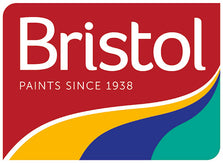
What are the best methods for cleaning up spills or overspray?
Cleaning up spills or overspray promptly and effectively is important to maintain a neat work environment and prevent damage to surfaces. The method for cleanup will vary depending on the type of paint (water-based, oil-based, or lacquer) and the surface on which the spill occurred. Here are the recommended methods:
1. Water-Based Paint (e.g., latex or acrylic):
-
Spills on Hard Surfaces:
- Wipe up the excess paint immediately using a damp cloth or paper towel.
- Clean the area with soapy water and a scrub brush if necessary. Rinse with clean water and dry.
-
Spills on Carpet:
- Blot (don't rub) the spill immediately with a clean cloth to absorb as much paint as possible.
- Mix a solution of warm water, a few drops of dishwashing detergent, and a splash of vinegar. Sponge the affected area with the solution and blot dry.
- Rinse the area with cold water and blot dry.
-
Overspray:
- If the overspray is still wet, wipe it off with a damp cloth.
- For dried overspray, you can use a scrub brush and soapy water or a paint remover formulated for water-based paints.
2. Oil-Based Paint:
-
Spills on Hard Surfaces:
- Wipe up as much paint as possible using a cloth.
- Use mineral spirits or paint thinner and a cloth or rag to clean the area. Always use in a well-ventilated area and wear gloves.
-
Spills on Carpet:
- Blot the spill immediately with a clean cloth.
- Apply a small amount of paint thinner or turpentine to a clean cloth and gently dab the affected area. Take care not to spread the spill further.
- Once the paint is removed, clean the area with a solution of dishwashing detergent and warm water.
-
Overspray:
- If the overspray is still wet, wipe it off with a cloth dampened with mineral spirits or paint thinner.
- For dried overspray, you might need a commercial paint remover or stripper. Make sure to follow the manufacturer's directions and use in a well-ventilated area.
3. Lacquers:
-
Spills & Overspray:
- Lacquers dry quickly. For immediate spills or overspray, use lacquer thinner and a clean cloth.
- Ensure good ventilation as lacquer thinner fumes are potent.
General Tips:
-
Always Test: Especially on carpets or upholstery, test any cleaning solution on an inconspicuous area first to check for discoloration or damage.
-
Safety: When using chemicals like paint thinners or mineral spirits, work in a well-ventilated area, wear gloves, and avoid contact with the skin. Store these substances out of reach of children and pets.
-
Avoid Rubbing: Rubbing can spread the spill and push the paint deeper into the surface, especially with fabrics. Instead, blot or dab the area.
Responding quickly to spills and having the right cleaning supplies on hand can make cleanup much more manageable. Always remember to refer to the paint can label, as it often provides cleanup instructions and recommendations.
